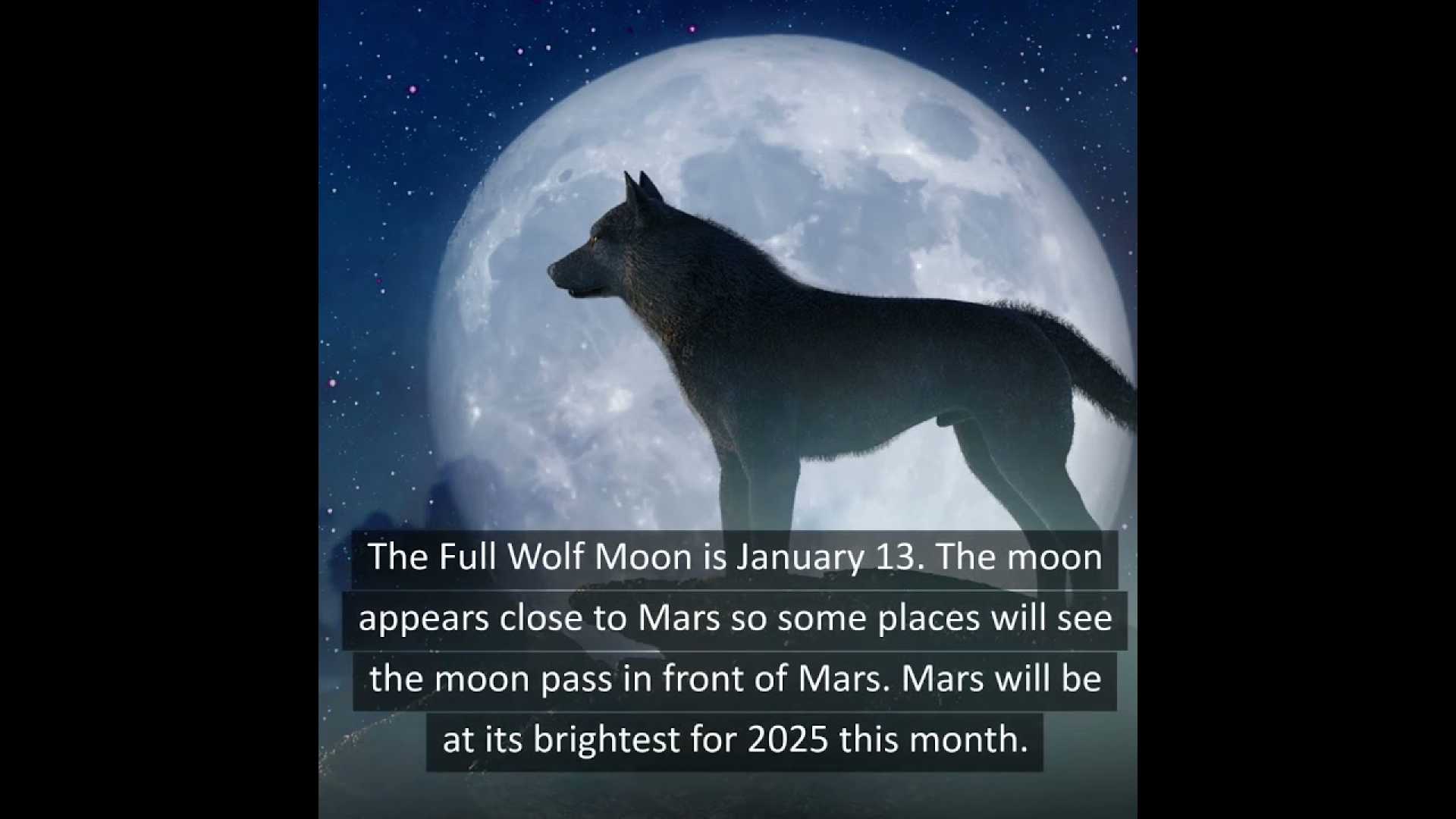World
January 2025 Full Wolf Moon to Coincide with Major Celestial Events

The next full Moon, known as the Wolf Moon, will rise on Monday evening, Jan. 13, 2025, at 5:27 p.m. EST, according to NASA. This celestial event will be visible across much of the world, with the Moon appearing full for approximately three days. The Wolf Moon will also coincide with several cultural and religious festivals, including the start of the Hindu pilgrimage Prayag Kumbh Mela and the Buddhist celebration of Duruthu Poya.
The Wolf Moon derives its name from Native American traditions, as wolves were often heard howling outside villages during the cold winter months. European names for this Moon include the Ice Moon and the Old Moon. Additionally, this full Moon marks the start of the 44-day Prayag Kumbh Mela, a Hindu festival expected to draw around 400 million visitors to the city of Prayagraj, India.
On the night of the full Moon, skywatchers in the continental USA, parts of Africa, Canada, and Mexico will witness the Moon passing in front of the planet Mars. This rare alignment will create a stunning visual as Mars appears near the Moon, with the bright star Pollux also visible nearby. Venus, Jupiter, Saturn, and Uranus will also be prominent in the evening sky, offering excellent opportunities for planet watching with a backyard telescope.
This full Moon also holds significance in various lunar and lunisolar calendars. It marks the middle of the 12th month in the Chinese Year of the Rabbit and the start of the Year of the Snake on Jan. 29. In the Hebrew calendar, it falls in the middle of Tevet, and in the Islamic calendar, it aligns with Rajab, one of the four sacred months.
As winter continues in the Northern Hemisphere, the daily periods of sunlight will gradually lengthen. NASA encourages skywatchers to take advantage of the early sunsets to enjoy the wonders of the night sky, while also staying warm in the cold weather.












